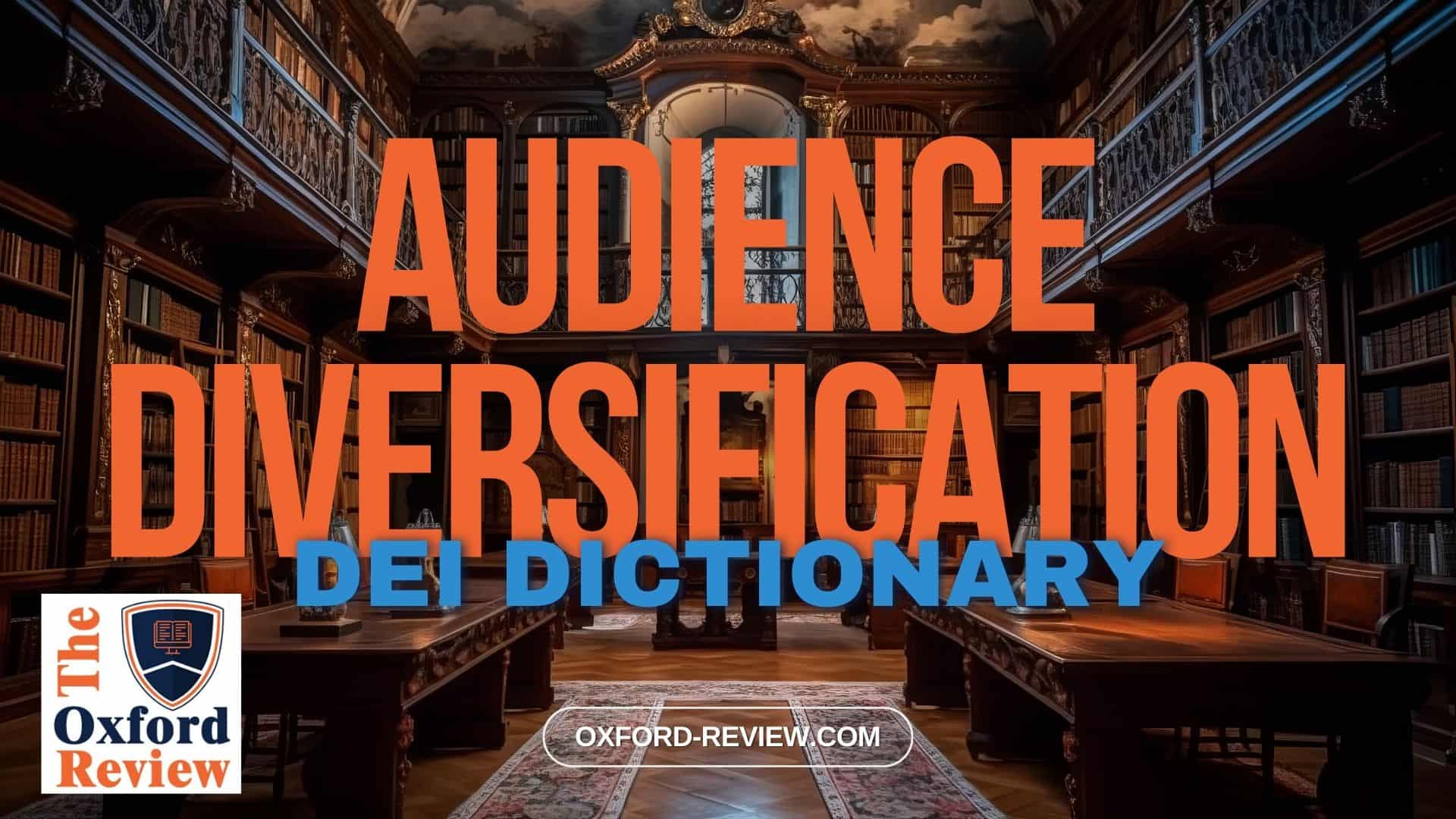Audience Diversification – Definition and Explanation

Understanding Audience Diversification: Key Strategies for Inclusive Engagement
In today’s fast-evolving digital landscape, businesses and organisations are increasingly recognising the importance of Diversity, Equity, and Inclusion (DEI) in their operations. Among the many facets of DEI, audience diversification stands out as a crucial strategy for fostering a more inclusive environment and expanding reach.
Definition:
Audience diversification refers to the intentional effort to broaden and enrich the demographic composition of an audience or customer base. It involves reaching out to individuals from various backgrounds, including but not limited to different ethnicities, cultures, genders, ages, abilities, and socioeconomic statuses. The goal is to create a more representative and inclusive community that reflects the diversity of the broader society.
Significance:
Embracing audience diversification is not merely a moral imperative but also a strategic business decision with tangible benefits. By engaging with a more diverse audience, organisations can:
- Enhance Innovation: Diverse perspectives breed innovation. When you have a variety of voices contributing to discussions and decision-making processes, you’re more likely to come up with creative solutions and ideas.
- Expand Market Reach: Catering to a diverse audience allows businesses to tap into new markets and customer segments. This can lead to increased revenue streams and sustained growth.
- Build Brand Loyalty: Inclusivity fosters trust and loyalty among customers. When individuals feel represented and valued by a brand, they are more likely to remain loyal and advocate for it within their own networks.
- Mitigate Risk: A diverse audience can help mitigate risks associated with market fluctuations or shifts in consumer preferences. By not relying heavily on a single demographic, organisations can better withstand economic uncertainties.
Strategies for Implementing Audience Diversification:
- Conduct Audience Research: Start by understanding the demographics and preferences of your current audience. Identify gaps and opportunities for diversification.
- Develop Inclusive Content: Create content that resonates with various audience segments. Use inclusive language, imagery, and messaging to appeal to a broader range of individuals.
- Expand Marketing Channels: Explore different marketing channels and platforms to reach diverse audiences. This may include social media, community events, multicultural publications, and targeted advertising campaigns.
- Collaborate with Diverse Voices: Partner with influencers, content creators, and community leaders from different backgrounds to amplify your message and reach new audiences.
- Foster Inclusive Spaces: Cultivate an inclusive environment within your organisation where diverse voices are heard, valued, and empowered to contribute.
Example:
Consider a fashion retailer looking to diversify its audience. Through audience research, the retailer identifies a growing demand for inclusive sizing options among plus-size individuals. In response, the retailer expands its product range to cater to a wider range of body types, promotes body-positive messaging in its marketing campaigns, and collaborates with influencers from diverse backgrounds to showcase inclusivity. As a result, the retailer not only attracts a more diverse customer base but also strengthens its brand reputation as a champion of inclusivity in the fashion industry.
Conclusion:
In conclusion, audience diversification is a multifaceted strategy that holds immense potential for businesses and organisations seeking to foster inclusivity and drive sustainable growth. By embracing diversity in all its forms, companies can cultivate stronger connections with their audience, drive innovation, and build a more resilient future.
References:
Glow, H., Kershaw, A., & Reason, M. (2021). Leading or avoiding change: the problem of audience diversification for arts organisations. International Journal of Cultural Policy, 27(1), 130-148. https://www.tandfonline.com/doi/full/10.1080/10286632.2019.1709060
Andorka, C. (1999). An audience diversification model for public gardens and museums (Doctoral dissertation, University of Delaware). https://udspace.udel.edu/items/49d3111f-0c14-4523-b4be-8a5c49e1b1c5
Be impressively well informed

Get the very latest research intelligence briefings, video research briefings, infographics and more sent direct to you as they are published
Be the most impressively well-informed and up-to-date person around...
